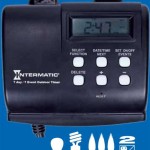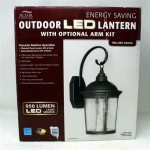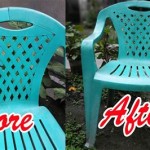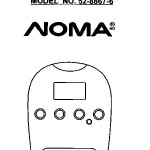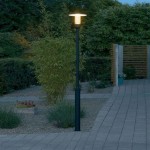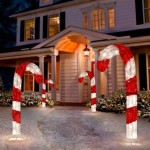Outdoor Moving Lights: Illuminating Spaces with Dynamic Effects
Outdoor moving lights, also known as moving head lights or robotic lights, represent a significant advancement in outdoor lighting technology. These fixtures offer dynamic control over light direction, color, intensity, and beam patterns, making them ideal for a wide range of applications, including architectural illumination, event lighting, theatrical productions, and security enhancements. Their versatility stems from their ability to create custom lighting designs and adapt to changing environmental conditions or event requirements. Understanding the functionality, applications, and technical specifications of outdoor moving lights is crucial for selecting the appropriate fixtures and achieving the desired aesthetic and functional outcomes.
The core principle behind outdoor moving lights lies in their motorized pan and tilt mechanisms. These motors allow the fixture's head to rotate horizontally (pan) and vertically (tilt), enabling precise aiming and dynamic movement of the light beam. In addition to pan and tilt, most moving lights incorporate a range of other features, such as color mixing systems, gobo wheels, iris control, zoom functions, and focus adjustments. These features provide designers with a high degree of control over the final output, allowing them to create a variety of effects, from subtle color washes to complex animated patterns.
The durability of outdoor moving lights is paramount, given their exposure to the elements. These fixtures are typically constructed with weatherproof housings that protect the internal components from rain, snow, dust, and extreme temperatures. The ingress protection (IP) rating indicates the degree of protection offered by the enclosure, with higher IP ratings signifying greater resistance to environmental factors. For outdoor applications, an IP rating of at least IP65 is recommended, signifying protection against dust and water jets. The selection of appropriate materials, such as corrosion-resistant metals and UV-resistant plastics, further contributes to the longevity and reliability of outdoor moving lights.
Key Point 1: Functionality and Components of Outdoor Moving Lights
The functionality of outdoor moving lights can be broken down into several key components, each contributing to the overall performance and versatility of the fixture. These components work in concert to deliver the desired lighting effects and allow for precise control over the light output.
The light source is the heart of the moving light. Historically, high-intensity discharge (HID) lamps were commonly used due to their high output and efficiency. However, light-emitting diodes (LEDs) are increasingly replacing HID lamps in outdoor moving lights. LEDs offer several advantages, including lower power consumption, longer lifespan, faster response times, and improved color mixing capabilities. The choice of light source depends on the specific application requirements, with factors such as brightness, color accuracy, and energy efficiency influencing the decision.
The pan and tilt mechanism is responsible for the dynamic movement of the light beam. High-precision motors and encoders provide accurate positioning and smooth movement. The range of motion for pan and tilt varies depending on the fixture, but typically encompasses a wide range of degrees, allowing for extensive coverage of the illuminated area. The speed and smoothness of the pan and tilt movements are crucial for creating visually appealing effects.
Color mixing systems allow for the creation of a wide spectrum of colors. Additive color mixing, using red, green, and blue (RGB) LEDs, is a common approach. Some fixtures also incorporate amber, cyan, or white LEDs to expand the color palette and improve color rendering. Color filters, often called color wheels, can also be used to produce specific colors. The ability to seamlessly transition between colors is essential for creating dynamic and visually engaging lighting designs.
Gobo wheels contain etched or printed patterns (gobos) that can be projected onto surfaces. Gobos allow for the creation of textured light patterns and the projection of logos or other images. Some moving lights feature multiple gobo wheels with rotating or interchangeable gobos, providing a high degree of flexibility in pattern design. The clarity and sharpness of the projected gobo patterns depend on the quality of the gobo material and the optical system of the fixture.
Iris control allows for the adjustment of the beam diameter, creating a spotlight effect or a wider wash of light. A mechanical iris diaphragm controls the size of the aperture, effectively narrowing or widening the light beam. This feature is particularly useful for highlighting specific objects or areas within the illuminated space.
Zoom and focus functions allow for the adjustment of the beam angle and focal distance. The zoom function changes the beam angle, enabling the light to be focused on a smaller area or spread out over a larger area. The focus function adjusts the sharpness of the projected image or gobo pattern. These features are essential for optimizing the light output for different distances and target areas.
Control systems are integral to operating outdoor moving lights. Digital multiplex (DMX) is the industry standard control protocol for lighting systems. DMX allows for the control of individual parameters of each fixture, such as pan, tilt, color, gobo, and intensity. Wireless DMX systems eliminate the need for physical cables, simplifying installation and control. Advanced control consoles and software provide intuitive interfaces for programming and operating complex lighting sequences.
Key Point 2: Applications of Outdoor Moving Lights
The versatility of outdoor moving lights makes them suitable for a wide range of applications, from highlighting architectural features to creating immersive event experiences. The specific application dictates the type of fixture, control system, and programming required.
Architectural illumination involves using moving lights to highlight and enhance the aesthetic appeal of buildings and other structures. Moving lights can be used to create dynamic color washes, project patterns onto facades, and emphasize architectural details. The ability to change the lighting scheme remotely allows for the creation of different moods and themes for various occasions. For example, a building could be illuminated with corporate colors for a company event or with holiday-themed colors during the festive season.
Event lighting encompasses the use of moving lights to create dynamic and engaging atmospheres for concerts, festivals, and other outdoor events. Moving lights can be used to create sweeping beams of light, project colorful patterns onto the stage, and synchronize lighting effects with music. The fast response times and precise control offered by moving lights allow for the creation of complex and visually stunning lighting shows. The robust construction of outdoor moving lights ensures their reliability in demanding event environments.
Theatrical productions often utilize outdoor moving lights to enhance the visual storytelling. Moving lights can be used to create dramatic lighting effects, simulate weather conditions, and highlight specific performers or set pieces. The precise control over light direction and intensity allows for the creation of nuanced and expressive lighting designs. The ability to project gobos and create textured light patterns adds depth and visual interest to the stage. The use of battery-powered wireless DMX moving lights allows for flexible placement on stage without cable clutter.
Security lighting can benefit from the dynamic capabilities of outdoor moving lights. Moving lights can be programmed to scan designated areas, detect movement, and illuminate potential intruders. The ability to remotely control the light direction and intensity allows security personnel to respond quickly to security threats. The bright and attention-grabbing light output of moving lights can deter criminal activity and enhance the overall security of the property.
Landscape lighting can be enhanced with strategically placed outdoor moving lights. These fixtures can highlight specific plants or trees, create dramatic shadows, and add a sense of depth and dimension to the landscape. The ability to change the color and intensity of the light allows for the creation of different moods and ambiances. The use of low-power LED moving lights can minimize energy consumption while still providing impactful lighting effects.
Key Point 3: Technical Specifications and Considerations
Selecting the appropriate outdoor moving lights requires careful consideration of several technical specifications and factors. These specifications determine the performance, reliability, and suitability of the fixture for the intended application.
Light output, measured in lumens, is a critical specification. The required light output depends on the size of the illuminated area and the desired level of brightness. For architectural illumination, a higher light output may be necessary to effectively highlight tall buildings or large structures. For landscape lighting, a lower light output may be sufficient to create subtle and atmospheric effects.
Color temperature, measured in Kelvin (K), indicates the warmth or coolness of the light. Lower color temperatures (e.g., 2700K) produce a warm, yellowish light, while higher color temperatures (e.g., 6500K) produce a cool, bluish light. The appropriate color temperature depends on the desired aesthetic and the specific application. For architectural illumination, a warmer color temperature may be preferred to create a welcoming ambiance. For security lighting, a cooler color temperature may be more effective in deterring crime.
Beam angle determines the width of the light beam. Narrow beam angles create a spotlight effect, while wider beam angles provide a wash of light. The zoom function allows for the adjustment of the beam angle, providing flexibility in lighting design. The choice of beam angle depends on the size and shape of the target area and the desired lighting effect.
IP rating indicates the degree of protection offered by the fixture's enclosure. For outdoor applications, an IP rating of at least IP65 is recommended to protect against dust and water jets. Higher IP ratings, such as IP67 or IP68, provide even greater protection against submersion in water. The IP rating is crucial for ensuring the longevity and reliability of the fixture in harsh outdoor environments.
Power consumption is an important consideration for energy efficiency. LED moving lights typically consume less power than HID lamps. The use of energy-efficient fixtures can significantly reduce operating costs and minimize environmental impact. The overall power consumption of the lighting system should be carefully calculated to ensure that the electrical infrastructure can support the load.
Control protocols, such as DMX, allow for the remote control of the fixture's parameters. Wireless DMX systems eliminate the need for physical cables, simplifying installation and control. The choice of control protocol depends on the complexity of the lighting system and the desired level of control. Advanced control consoles and software provide intuitive interfaces for programming and operating complex lighting sequences.
Warranty and service support are important factors to consider when selecting outdoor moving lights. A comprehensive warranty provides protection against defects and malfunctions. Reliable service support ensures that any issues can be resolved quickly and efficiently. The reputation and experience of the manufacturer or supplier should be carefully evaluated.

Morttic Star Laser Projector Light Led Moving Outdoor Landscape Stage Rgb Lamp Waterproof With Remote Com

Topchances Snowflake Projector Lights Waterproof Moving Light Indoor Outdoor Landscape Spotlight For Home Garden Yard Patio Decoration Multicolor Com

Automated Dj Moving Lights Lighting Equipment Adj Ip65 Outdoor Rated

Outdoor Stage Beam Moving Head Lights 6 Splitter Power Cable Disco Dj Party Bar

Moving Snowflakes Projector Lights Dynamic Snowfall Pattern Outdoor Indoor Led Projection Lamp Ip65 Waterproof 180 Rotating Spotlight For Holiday Xmas Party Decor Com

Outdoor Events Dmx 350w 17r Sky Super Beam Ip67 Waterproof Moving Head Light

Outdoor Moving Head Light Rain Cover Led Stage China And Protection Made In Com

Upgraded Led Projector Light With 14 Patterns Moving Snowflake Spotlight Lawn Garden For Holiday Patio Stage House Decoration Com

China Waterproof Ip65 Led Wash Moving Light Stage Lights With High Brightness Manufacture And Factory Beyond

Ip65 Waterproof 450w Sharpy Beam Moving Head Lights Outdoor Stage Park Sky
Related Posts
